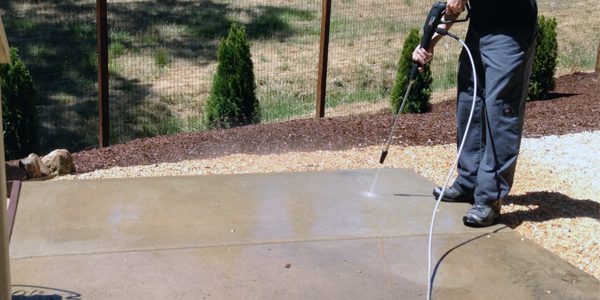How To Prepare Concrete Floors For Topcoats
So here’s how to prepare concrete floors for topcoats. The three things to address before applying a topcoat to any concrete floor… contaminants, moisture, and pH. Contaminants can be anything from dust and dirt to grease, mold, mildew and other topical sealants. These need to be removed before any topical sealant can properly adhere to the concrete.
Cleaning
Dust and dirt can be easily removed by pressure washing or extracting the dirt away with an extractor machine. Most carpet cleaning companies use these. Extractor machines work great indoors because they are self contained. In other words, all the water is sprayed in a contained wand and they have a vacuum system attached to the wand to remove the contaminants. Mold and mildew might require a specialty cleaner ( like Mold And Mildew Remover ) in conjunction with the pressure washing / extractor process. Grease is more difficult to remove but there are great degreasers ( like Oil Cleaner And Degreaser ) to help remove the oils out of the slab. Most poultice based products ( like Grey Out ) take at least 24 hours to be effective and might take more than one application. There are products that can be used after pressure washing and after the concrete has dried a bit.
Floor Stripping
Sealant removal can be a little tricky if you don’t have the right tools. Most topical sealant can be removed with floor strippers but unfortunately a lot of these products are toxic and high in VOCs. There is a great soy based strippers ( like SCR1600 Soy Stripper ) and other products out there that work just as well but need to be ordered online. An orbital floor machine equipped with black stripper pads also works great. The floors need to be rinsed well after any sort of stripping to remove the stripper and sealant residue. Scr1600 comes with an oil eating enzyme cleaner to remove any oils left from the stripping process.
Bead blasting is a great alternative for stripping a concrete floor and preparing it for the topcoat application.
Concrete pH
Making sure the slab is completely dry and at the proper pH is extremely important before applying a topcoat. If there is residual moisture in the slab or the pH is too high the topcoat will delaminate. You can test the pH of the slab using de-ionized water and pH test strips. A moisture test kit usually consists of a hand held devise with two probes that need to be inserted into the slab. This devise tests the conductivity of the concrete due to moisture.
The pH of new concrete will be approximately 12 to 13 mostly due to calcium hydroxide, which is a normal by-product of concrete hydration. As the slab reacts with carbon dioxide in air, the pH of the surface gradually is reduced to about 8.0 through a process called carbonation. A concrete slab that is carbonated and ready for topcoat application should have a pH of about 8.0. That means the surface of the concrete has had minimal moisture vapor movement. Excessive moisture vapor movement will bring additional hydroxides (alkalis) to the surface and will cause the pH level to increase. Salts that work their way up from the earth have a tendency to destroy satisfactory bonding to topcoats by sheer physical displacement.
Moisture
Moisture from the cleaning process can delay the topcoat application and create a lot of headaches. For instance, depending on the temperature and humidity, the concrete can take weeks to dry. This can be super frustrating having to moisture test the slab over and over again. Not to mention the labor and travel costs to commute to the job site to test the concrete. Not fun!
Solutions
In conclusion, using Creto DPS eliminates many of these problems. Creto DPS can be applied after the cleaning process to permanently seal the concrete and prevent salts and other minerals from leeching up from the earth below. As the Creto DPS cures, it pushes out any residual moisture from the concrete and leaves the slab pH balanced and ready for topcoat application.
Creto DPS application is easy, apply the sealer to the concrete and allow to dwell for 30 minutes, continually moving the sealer from areas that are puddled to areas that are more thirsty. After 30 minutes, remove the excess sealer by hosing off the area or shop vacuuming up the excess sealer, and then mopping the floor with water. Creto DPS can increase topcoat bonding ability by 300% and will extend the longevity of your investment.
There are many different topcoats on the market today and it might be difficult to choose which one is perfect for your situation. Traditional epoxy topcoats ( like E15 Epoxy ) are the old standard in the industry and have great chemical and abrasion resistance. Urethane topcoats ( like Barrier ) can be used with an epoxy base coat to give added layer of protection. Urethane topcoats are usually non-yellowing and can be purchased in high gloss or matte finishes. Polyaspartic topcoats ( like Sweet Concrete Coating ) are by far the most durable topcoats and are non-yellowing as well. However, they can only be applied over diamond honed concrete.
Featured Products
https://www.grainger.com/product/3M-17-Black-Stripping-Pad-3U066
Instructional Videos
https://www.youtube.com/watch?v=DNk0el_7aEo








